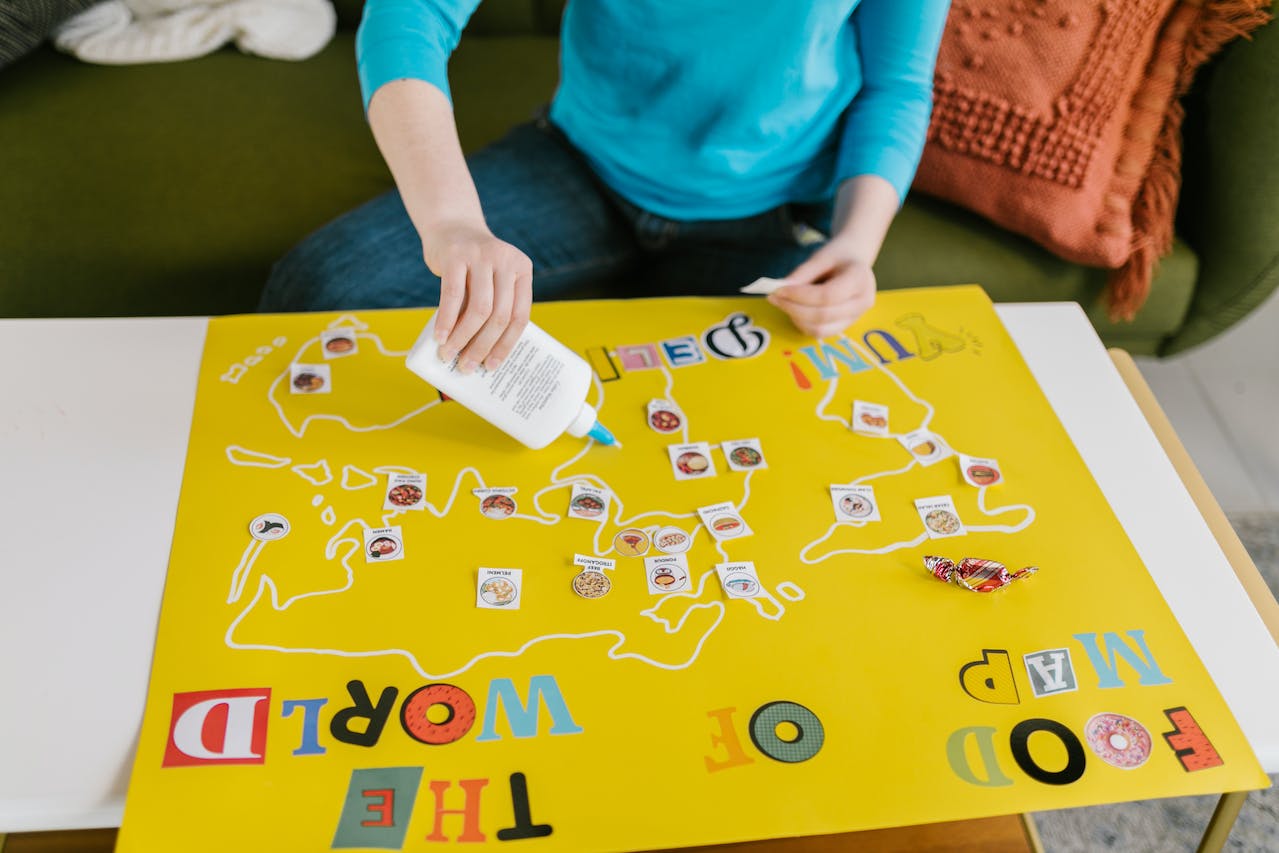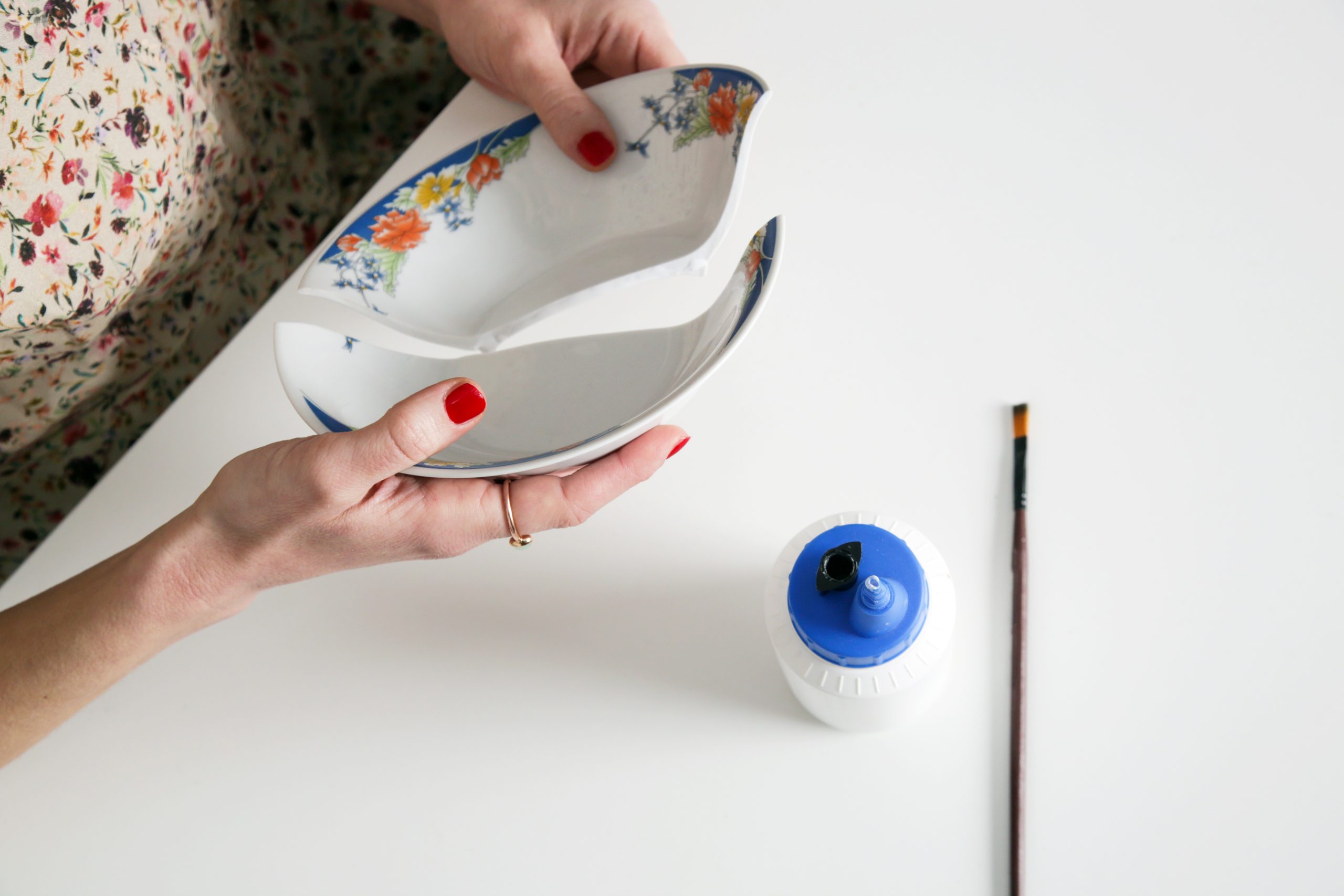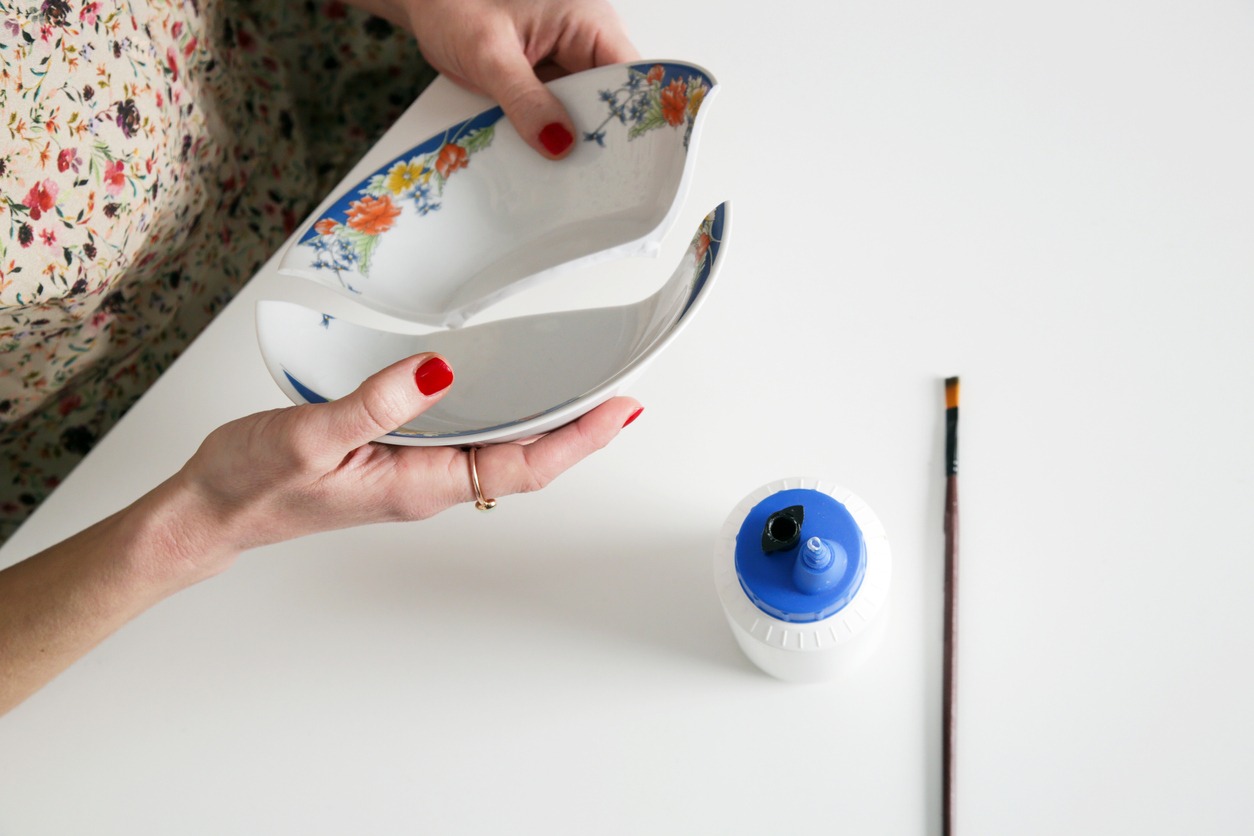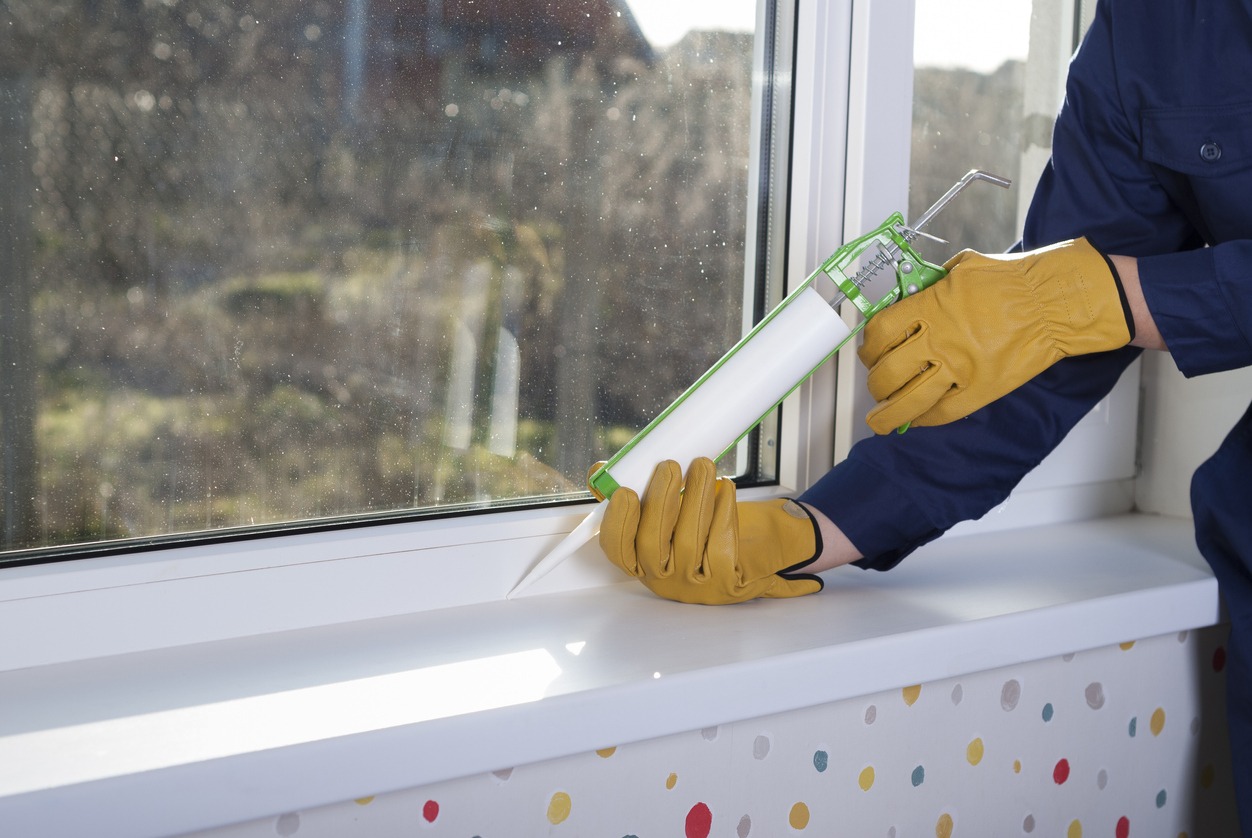What Type of Glue Do You Need to Glue Leather?
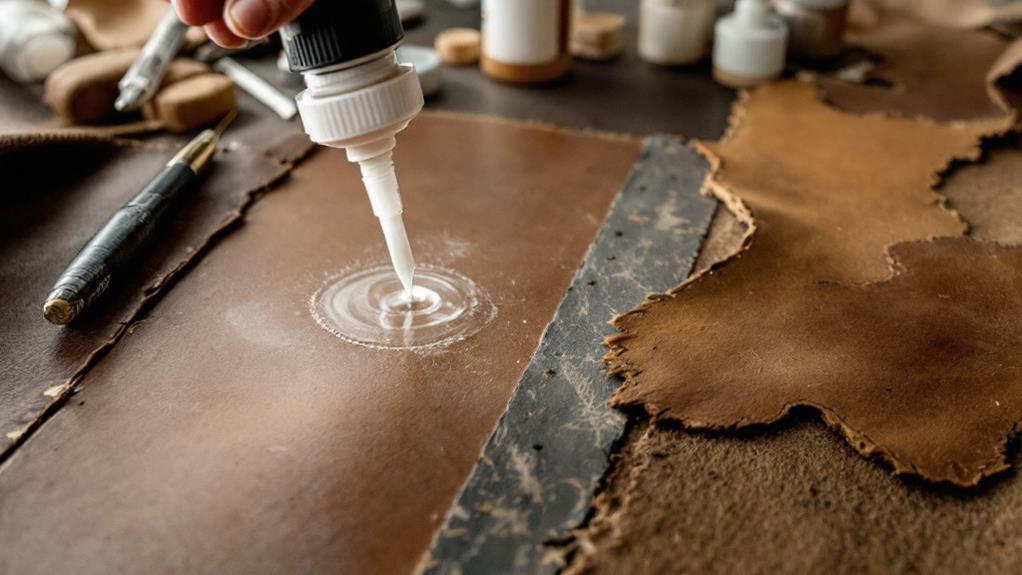
When gluing leather, you'll need to choose the right adhesive based on your project's requirements. Contact cement offers a strong, flexible bond resistant to water and oil. E6000 provides exceptional strength and waterproof properties. Barge cement is known for its permanent, flexible bond. Leather-specific glues like Aleene's and Tandy's are formulated for bonding leather to leather or fabric. Common adhesives like super glue or epoxy can work for certain projects. Consider factors such as leather type, required bond strength, drying time, and flexibility when selecting your glue. With the right adhesive and proper application techniques, you'll achieve a durable and long-lasting bond for your leather project.
Types of Leather Glue
When it comes to gluing leather, you'll find a variety of adhesives designed for different needs. Contact adhesive is a popular choice, offering a strong and flexible bond that's resistant to water and oil. It's ideal for bonding leather layers together, but may not withstand all solvents.
For the strongest hold, E6000 glue is often recommended. It's renowned for its ability to resist tearing the leather and provides excellent waterproof and solvent-resistant properties.
If you're looking for a permanent, flexible bond with good resistance to water and solvents, Barge cement is another solid option.
Leather-specific glues like Aleene's Leather & Suede and Tandy's Eco-Flo Leather Weld are formulated specifically for bonding leather to leather or leather to fabric. These specialized adhesives can offer excellent results for certain projects.
Don't overlook common adhesives like super glue, Gorilla glue, Elmer's craft glues, or epoxy adhesives. While not specifically designed for leather, they can be effective depending on your project's requirements. Consider factors such as flexibility, water resistance, and the materials you're bonding to choose the right leather glue for your needs.
Factors Affecting Glue Selection
Selecting the right glue for your leather project isn't just about picking any adhesive off the shelf. You'll need to consider several factors to guarantee you're using the best glue for leather that will provide a strong, lasting bond.
When choosing a glue or adhesive for your leather work, contemplate:
- Leather type: Porous or non-porous surfaces affect adhesion
- Required bond strength: Some projects need stronger bonds than others
- Drying time: Fast-drying options like cyanoacrylate vs. slower-drying adhesives
The type of project you're working on will influence your choice between water-soluble, solvent-based, or contact cement adhesives. Solvent-based contact adhesives offer the strongest bonds and quick drying times but may pose health risks with frequent exposure. Water-based alternatives provide a safer option but may not bond leather as effectively on non-porous materials.
For projects requiring flexibility, avoid PVA glues as they can cause cracking in supple leathers. Instead, opt for contact cement or cyanoacrylate, which offer strong bonds while maintaining leather flexibility. Remember, the best glue for your project will depend on balancing these factors with your specific needs and working conditions.
Contact Cement for Leather
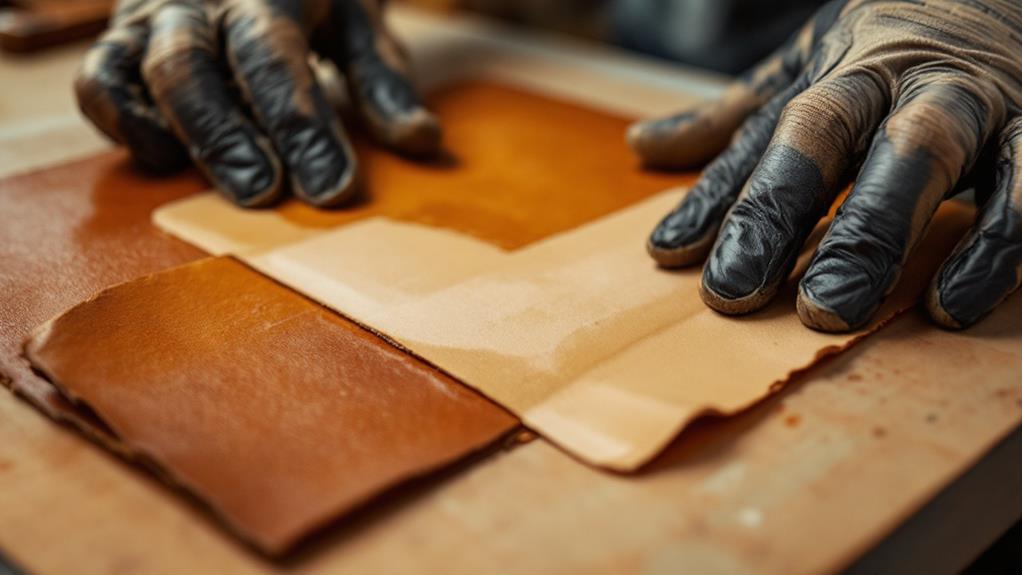
Versatility makes contact cement a top choice for leather adhesives. When you're looking for the best glue to bond leather surfaces together, Weldwood Contact Cement stands out as a highly recommended option among leatherworkers. It creates a strong, flexible bond that's resistant to water and oil, making it ideal for a wide range of projects.
To use contact cement effectively, you'll need to scuff up the hair side of the leather for suitable adhesion. The gel version is easier to handle and less messy than the liquid formula, giving you more control during application. You can apply it to both the flesh and hair sides of the leather, creating a permanent bond that withstands moisture and most solvents.
One of the advantages of using contact cement is its flexibility after curing, allowing for some adjustment during assembly. This feature makes it suitable for various leathercraft projects. While it provides excellent water and oil resistance, it's worth noting that it may not be completely solvent-proof. Overall, contact cement offers a reliable solution for bonding leather to leather in your projects.
E6000 and Barge Cement
E6000 and Barge Cement are powerhouse adhesives in the leatherworking world. These versatile glues offer exceptional strength and durability when bonding leather pieces together. E6000 is known for its flexibility and resistance to water and temperature changes, making it ideal for projects that may encounter various environmental conditions.
Barge Cement, on the other hand, boasts impressive shear strength and is particularly effective for bonding leather to other materials like rubber or wood.
When using glue to bond leather, consider these key factors:
- Surface preparation: Clean and roughen the leather surfaces for better adhesion
- Application technique: Apply thin, even coats to both surfaces for essential results
- Curing time: Allow sufficient time for the glue to set before handling or stressing the bond
Both E6000 and Barge Cement are excellent choices for leather projects, but they've different strengths. E6000 excels in flexibility and weatherproofing, while Barge Cement offers superior shear strength. Choose the type of glue that best suits your specific project requirements. Remember, proper application techniques and curing time are pivotal for ensuring your leather pieces stay securely glued together, regardless of the adhesive you select.
Leather-to-Fabric Adhesion Techniques
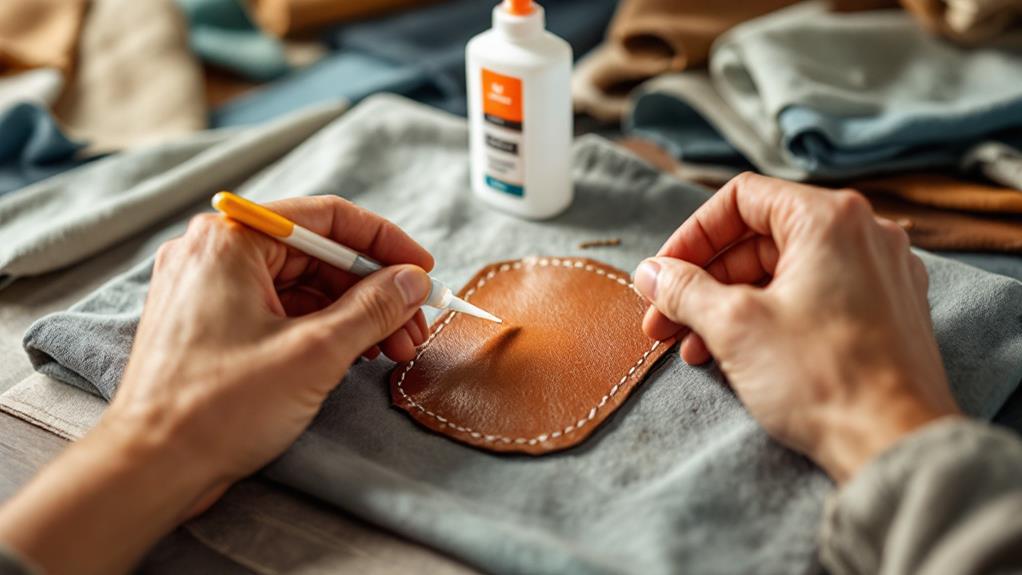
Bonding leather to fabric presents unique challenges that require specific adhesion techniques. When you're using glue to attach leather parts to fabric, you need to make careful considerations to guarantee a strong and lasting bond. Contact cement and E6000 are commonly used types of glue for this purpose, but you'll need to apply them thinly to avoid soaking through the fabric.
Before starting your project, it's pivotal to ensure the fabric is compatible with your chosen adhesive and its curing process. Consider the flexibility and durability requirements of your final product when selecting a glue. You don't want a bond that's too rigid or one that won't withstand regular use.
To achieve the best results, always test the adhesion on small samples before committing to your full project. This step allows you to fine-tune your technique and choose the most suitable glue. Proper substrate preparation is essential, so clean and prepare both surfaces according to the manufacturer's instructions. By following these leather-to-fabric adhesion techniques, you'll increase your chances of creating a strong, long-lasting bond between these two materials.
Application Methods for Leather Glue
Three main application methods for leather glue guarantee ideal outcomes: brushing, spreading, and spraying. When brushing, use a clean, soft-bristled brush to apply the glue evenly across the leather surface. This method works well for small to medium-sized projects and allows for precise control.
Spreading involves using a spatula or palette knife to distribute the glue, which is ideal for larger surfaces or when you need to cover a wide range quickly.
Spraying is perfect for intricate designs or when working with delicate leather. Make sure to use glue specifically designed for leather and follow the manufacturer's instructions carefully.
Regardless of the method you choose, remember these key points:
- Apply the glue in thin, even layers to prevent seepage and secure a strong bond
- Allow the glue to become tacky before pressing the leather pieces together firmly
- Use clamps or weights to hold the leather in place while the glue dries
A wide range of leather glues are available, and most are designed for specific applications. Choose the right glue for your project and application method to achieve the best results.
Troubleshooting Common Adhesion Issues
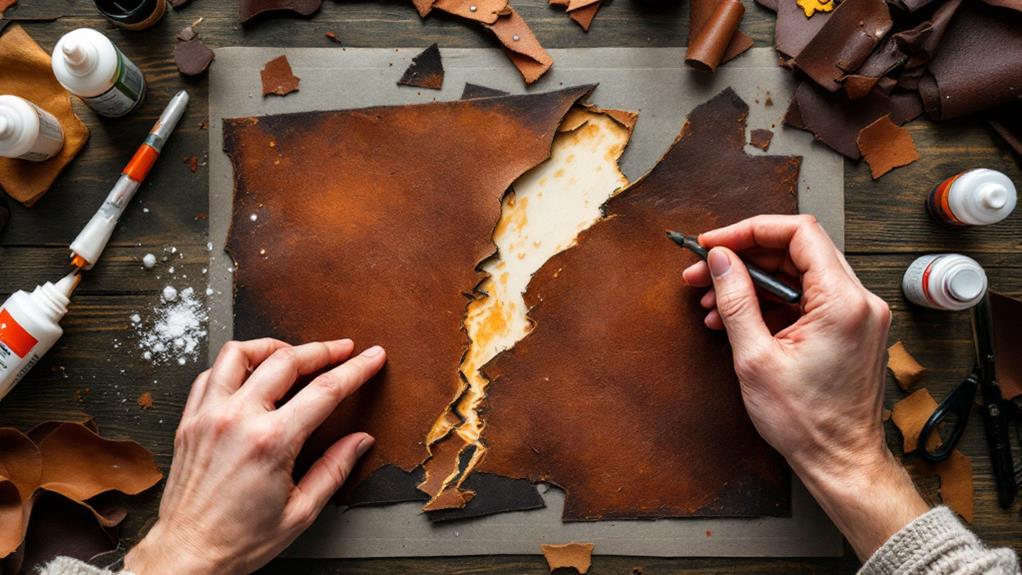
Glue gremlins can wreak havoc on your leather projects, but don't worry - most adhesion issues have simple solutions. If you're struggling to get pieces together, you might need help with your technique.
First, guarantee you're using the best leather glue for your specific project. Craft glue won't cut it for heavy-duty jobs.
If the glue isn't bonding, clean both surfaces thoroughly and roughen them slightly with sandpaper. This creates more surface area for the adhesive to grip. When dealing with thick or stiff leather, use clamps or rubber bands to maintain pressure while the glue dries.
For edges that won't stay put, try applying glue in thin layers, allowing each to become tacky before joining. If you're working with a flexible leather, keep the piece flat and weighted down during curing to prevent warping.

